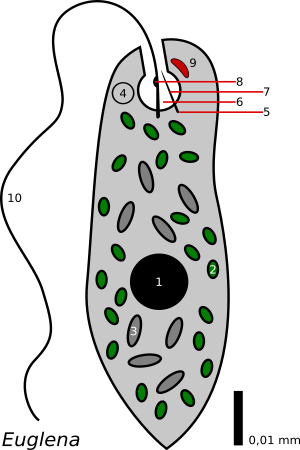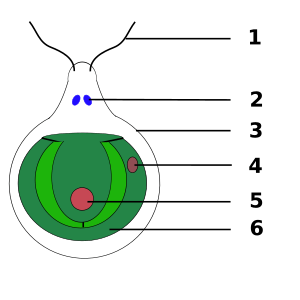Eyespot facts for kids


An eyespot is a very simple "eye" found in many small living things. It's like a tiny sensor that helps them detect light. You might also hear it called an ocellus or a pigment pit. These simple eyes can tell the difference between light and dark. However, they can't see clear pictures or shapes like our eyes can.
Contents
How Do Eyespots Work?
Eyespots are common in small, simple animals that don't have backbones, like the flatworm called Planaria. They don't have lenses to focus light. This means they can sense if it's light or dark, or if a shadow passes over them. But they can't form a detailed image of the world around them.
Sensing Light with Pigments
In many simple animals, the eyespot uses a special molecule called an opsin to sense light. Think of opsin as a light-catching pigment. When light hits the opsin, it sends a signal.
Sending Signals to the Body
After sensing light, a tiny nerve fibre carries the signal from the eyespot. This signal goes to the animal's simple nervous system. This allows the animal to react to light changes. For example, it might move away from a bright light or hide when a shadow appears.
Eyespots in Tiny Organisms
Eyespots are not just found in small animals. They also exist in single-celled organisms called protists. These are tiny living things made of only one cell. Examples include Euglena and Chlamydomonas.
In these tiny creatures, the eyespot is often connected to a flagellum. A flagellum is like a tiny tail that helps the cell move. The information from the eyespot helps the cell know where the light is. This allows the cell to move towards or away from light, which is important for finding food or staying safe.
The Ancient History of Eyes
The oldest known fossils of eyes are from about 540 million years ago. This time period is called the early Cambrian period. It was a time when many new types of animals appeared very quickly. Scientists call this the "Cambrian explosion".
Before this time, organisms probably used simple light spots. These spots could sense light, but they couldn't help with fast navigation or seeing detailed scenes. Some scientists believe that the evolution of eyes started a kind of "arms race" between animals. Animals with better eyes could hunt better or escape predators more easily. This led to even faster evolution of new features.

